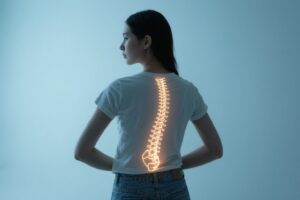
Chronic back pain affects millions worldwide and is often dismissed as a routine discomfort associated with ageing or a sedentary lifestyle. While many cases can be managed with at-home remedies or lifestyle changes, some instances of chronic back pain may indicate more serious underlying conditions. Recognizing these signs can help you seek medical intervention before complications arise.
Chronic back pain is defined as pain that persists for 12 weeks or longer, even after the initial injury or cause has been treated. Unlike acute back pain, which is short-lived and typically resolves with rest or therapy, chronic back pain can linger for months or years, significantly affecting one’s quality of life. It’s crucial to differentiate between manageable chronic pain and pain that signals something more severe.
If your back pain intensifies rather than improving, it’s a sign that the underlying condition might be progressing. Persistent pain despite rest, physical therapy, or over-the-counter medication warrants a professional evaluation. Conditions like degenerative disc disease or spinal arthritis often worsen over time if left unaddressed.
Pain that spreads to other areas of the body, such as the legs, hips, or arms, could indicate nerve involvement. For example, sciatica, a condition where the sciatic nerve is compressed—can cause shooting pain, tingling, or numbness in the lower extremities. Left untreated, nerve compression can lead to permanent damage.
Experiencing numbness, weakness, or a loss of sensation in your extremities suggests nerve damage or spinal cord involvement. This is often associated with conditions like herniated discs, spinal stenosis, or nerve root compression. Immediate medical attention is necessary to prevent further deterioration.
Difficulty bending, walking, or standing could signal structural problems in the spine, such as osteoarthritis, vertebral fractures, or severe muscle tension. Chronic pain that restricts basic movements should be addressed promptly to avoid further complications.
Loss of control over bowel or bladder function, combined with back pain, may indicate cauda equine syndrome. This rare but serious condition occurs when the nerve roots at the base of the spine are compressed. It is a medical emergency that requires immediate surgical intervention to prevent permanent nerve damage.
Chronic back pain accompanied by symptoms like fever, unexplained weight loss, or fatigue could point to infections, tumours, or systemic diseases. For example, spinal infections such as osteomyelitis can cause localized pain and systemic symptoms. These cases require prompt diagnosis and treatment.
Sudden changes in posture, such as a noticeable curve in the spine or uneven shoulders, may indicate structural conditions like scoliosis or kyphosis. While these changes are not always emergencies, significant or progressive deformities should be evaluated to prevent long-term issues.
For non-emergency cases of chronic back pain, the Spinal Backrack offers a proven, non-invasive solution to relieve discomfort and address the root cause of pain.
The Spinal Backrack works by decompressing the spine, which alleviates pressure on intervertebral discs and nerves. This innovative device is designed to realign the spine naturally, improving posture and mobility while reducing pain. It’s particularly effective for conditions like:
By using the Spinal Backrack regularly, you can experience long-term benefits without relying on temporary fixes like medication or injections. Its unique design ensures that the entire spine—from the cervical to the lumbar regions—benefits from targeted decompression.
While tools like the Spinal Backrack can significantly improve spinal health, certain symptoms require immediate medical attention. If your chronic back pain is accompanied by red flags such as numbness, bowel or bladder issues, or radiating pain, consult a healthcare provider promptly.
Medical professionals may recommend imaging tests like X-rays, MRIs, or CT scans to diagnose the underlying issue. Depending on the findings, treatment options may include physical therapy, injections, or, in severe cases, surgery.
Preventive care is key to avoiding chronic back pain and its associated complications. Incorporate these habits into your daily routine:
Chronic back pain is more than just a physical ailment, it can disrupt your daily life, limit mobility, and even lead to emotional distress. Recognizing the warning signs that require immediate attention is essential to prevent long-term complications. At the same time, incorporating preventive measures and solutions like the Spinal Backrack can help you manage back pain effectively and maintain a healthy spine.
If you’re dealing with persistent back pain, don’t wait for it to worsen. Take proactive steps to protect your spinal health and consult a healthcare provider for a personalized care plan. Your spine is central to your overall well-being—invest in its health today for a pain-free tomorrow.






Sign up our newsletter to get article update about backrack therapy.